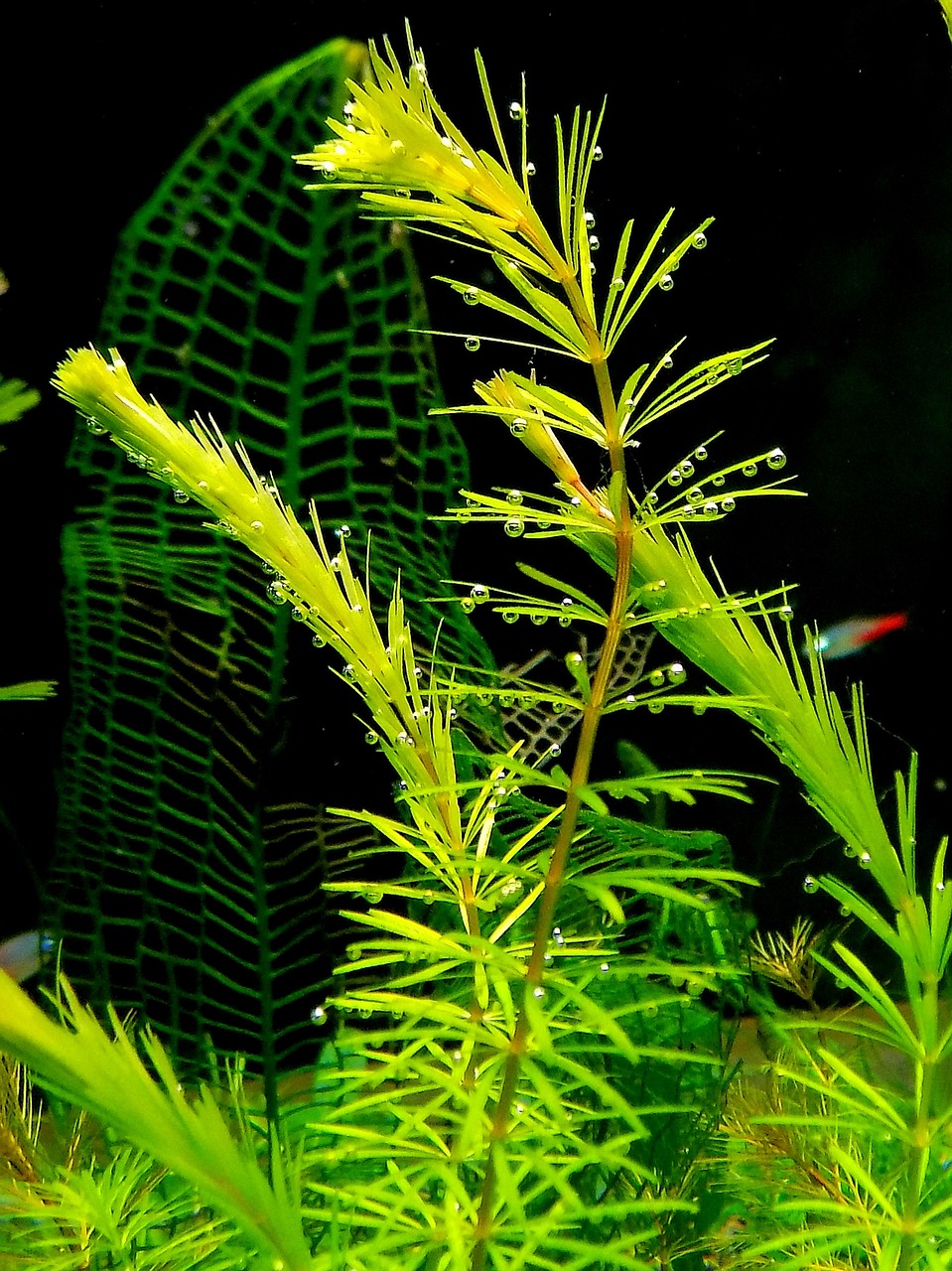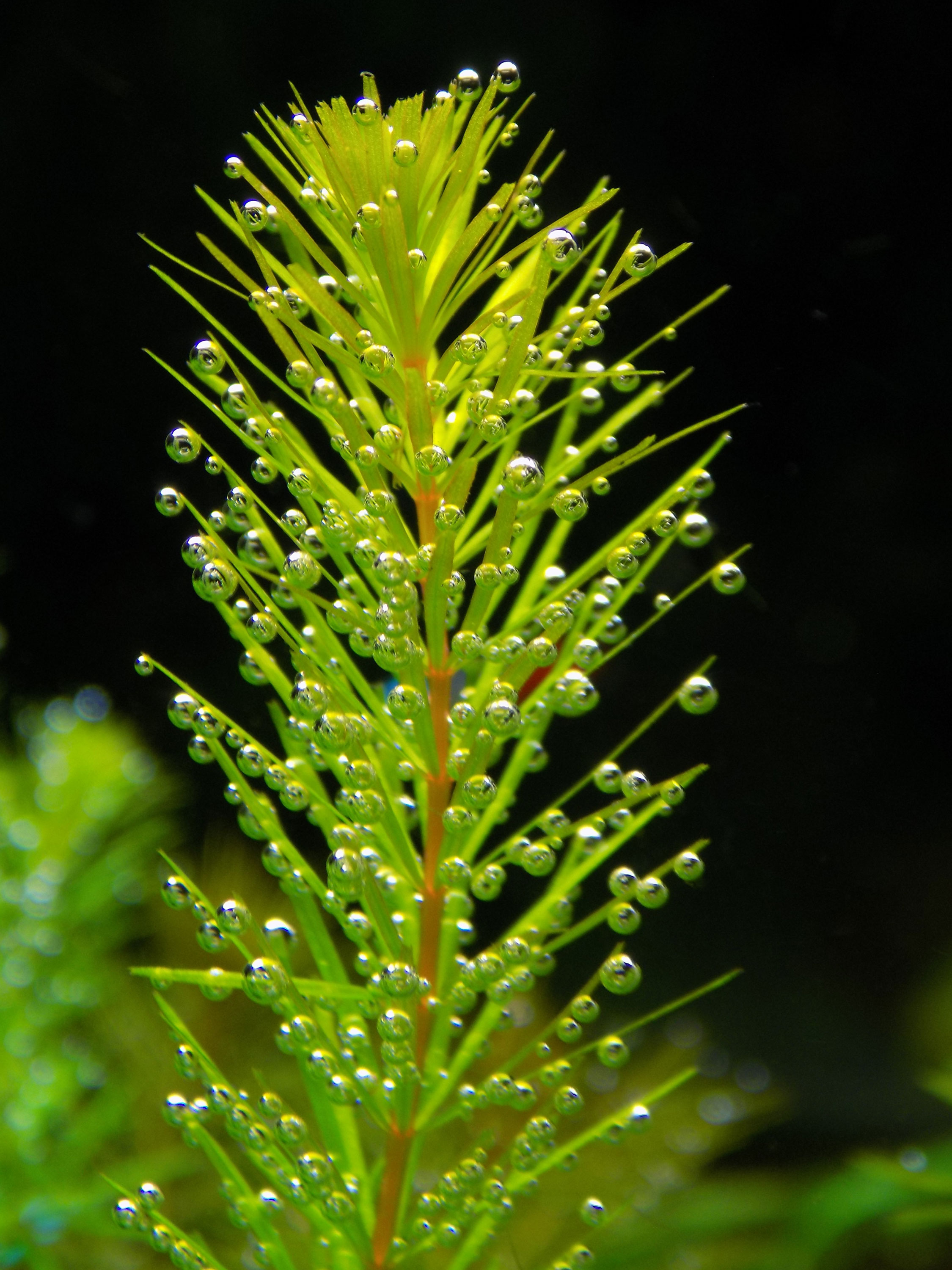Mineral nutrition of aquatic plants
Mineral nutrition of aquatic plants
Blog Wasserpflanze, Düngung, Mineralstoff, Water plant, Fertilisation, Mineral nutrient
Minerals in aquatic plant nutrition
Is mineral fertilisation necessary for aquarium plants?
This is a question that most aquarists ask themselves over time. It can be answered with a definite "depending". True to the the motto "Never change a running system" ¹, you should first ask yourself question of the cause. Is there a reason if higher aquatic plants aquatic plants thrive without problems? Certainly not. On the other hand on the other hand, reduced growth or damage to higher aquatic plants and excessive algae growth must be considered a cause. In view of the uptake of potentially fish-toxic compounds and the release of organic compounds that inhibit bacteria and parasites compounds (Horst 1992 ², Walstad 1999), the growth of aquatic plants in aquariums aquatic plants in aquaria with fish stocking is generally to be positive.
Impairment of higher aquatic plants and increased algae growth are indicators of an imbalance in plant nutrition occurring in the aquarium(Schmidt 1985). In addition to temperature, light intensity is the main environmental factor influencing plant nutrition in the aquarium(Pedersen et al. n.d.; Watson
2007). Energy is introduced into the aquarium in the form of electromagnetic
aquarium in the form of electromagnetic radiation. Both higher aquatic plants and algae
convert this energy through photosynthesis using
CO₂ into chemically stored energy. The products of photosynthesis
provide the basis for nutrient and energy metabolism, i.e. essential
essential physiological processes of plants(Nultsch 1996).
For these processes, nutrients, which are absorbed in the form of minerals , are essential. The minerals must be available to higher aquatic plants in a close ratio
to each other in order to enable a "healthy" utilisation of light energy.
utilisation of light energy. As a rule, the plant's need
of CO₂ and nutrients increases with increasing light intensity(Pedersen et al. n.d.; Watson 2007).
Based on this, Watson (2007) for the Aquatic Gardener Association (AGA) classifies aquariums with an illuminance of less than 0.5 W/l as low-tech aquaria. However, he points out that in the USA high-tech aquariums with illuminance levels greater than 1 W/l are not uncommon in the USA. are not uncommon. In the author's experience, aquariums in German aquariums are, on average, "energy-saving" low-tech aquariums with illuminance levels of around 0.2 W/l. Watson (2007) states that with a moderate fish population, low-tech aquaria can manage without additional CO₂ supply and mineral fertilisation. Walstad (1999) suggests using garden soil (topsoil) as a mineral (topsoil) as a source of minerals. However, Barr (2005) considers additional mineral fertilisation to be necessary for longer periods.
In aquaria with fish stocking, imbalances in the plant plant nutrition cannot be ruled out. If the mentioned indicators of such imbalances, this is usually due to an This is usually due to an oversupply of the main nutrients (N, P), which are introduced through the fish food. An additional supply of trace elements can correct this imbalance(Bergmann 1992). Sometimes an additional supply of CO₂ promotes the efficient utilisation of light energy and dissolved minerals(Pedersen et al. n.d.).
Explanations
1) Never change anything in a functioning system
2) Horst (1992) reports on the bactericidal effect of organic compounds released into the water by Myriophyllum spicatum. The inhibition of bacterial growth was proven in this context for Staphylococcus aureus, Bacilllus globifer, Proteus vulgaris and Escherichia coli.
All information in this documentation on plant nutrition are based on our own experience and carefully selected literature. Nevertheless, please check all information carefully before follow possible advice and recommendations. We expressly point out point out that all information is purely informative and that we accept no any liability for damages and consequential damages (as far as legally permissible by law).
ALU (2003):
http://www.umweltschutz-sh.ch/NEU_06NOV02/Umweltschutz/Wasser/OW/OW-Rhein-Kalkausscheidung
Juni03-5-6-03.pdf. Amt für Lebensmittelkontrolle und Umweltschutz des
Kantons Schaffhausen, Schaffhausen.
Barr, T. (2005):
Non CO₂-Methods, Another Method for Different Goals. http://www.AquaticPlantNews.com/tombarrnon-co2.htm.
Bergmann, W. (1992):
Nutritional Disorders of Plants -Development, Visual and Analytical Diagnosis-. Gustav Fischer, Jena, Stuttgart, New York.
BEW (2005):
Chemisch-physikalische Trinkwasseruntersuchung in Anlehnung an § 14 Abs. 1 bzw. 3 (Indikatorparameter) der TWVO vom 21. Mai 2001. Jahresdurchschnittswerte 2005. Bayreuther Energie und Wasserversorgungs GmbH, Bayreuth.
Buddendorf, C. (2003):
Free of Algae with Redfield Ratio
Dennerle (o. A.):
Elektrische Leitfähigkeit – was kann ich damit anfangen? http://www.dennerle.de/BPLeitfaehigkeit.htm
Finck, A. (1991):
Pflanzenernährung in Stichpunkten. Hirts Stichwortbücher. Gebrüder Bornträger, Berlin, Stuttgart.
Institut für Umweltverfahrenstechnik, Universität Bremen (o. A.):
WasserWissen - Das Internetportal für Wasser und Abwasser. Wasserhärte.
Jacobsen, N. (1979):
Aquarium Plants. Blandford Press Ltd, Poole.
Krause, H.J. (1985):
Aquarienwasser -Diagnose und Therapie-. Frankh’sche Verlagshandlung, Stuttgart.
Kremser, A. (o. A.):
Aquariendünger
Krombholz, P. (1998):
Nutrient Deficiency
Deficiency/toxicity symptoms by krombhol/teclink.net (Paul Krombholz) (Fri, 6 Feb 1998)
Larcher, W. (1994):
Ökophysiologie der Pflanzen. Eugen Ulmer, Stuttgart
LUBW (1999):
Das Kohlensäure-Gleichgewicht und die biogene Entkalkung.
http://www.xfaweb.baden-wuerttemberg.de/nafaweb/berichte/s_bio12/bio120009.html
. Landesanstalt für Umwelt, Messung und Naturschutz des Landes
Baden-Würtemberg, Karlsruhe.
Marschner, H. (2002):
Mineral Nutrition of Higher Plants. Academic Press, San Diego.
Mayland, H.J. (1985):
Süßwasseraquarium. Falken-Verlag, Niedernhausen.
Nultsch, W. (1996):
Allgemeine Botanik, Georg Thieme, Stuttgart, New York.
Pedersen, O., Christensen, C. und T. Andersen (o. A.):
CO2 and light stimulate the growth http://www.tropica.com/article.asp?type=aquaristic&id=142
Schmidt, G. (1985):
Das richtige Aquarienwasser -Einführung in die Aquarienchemie-. Albrecht Philler, Minden.
Schulze, E.D., Beck, E., und K. Müller-Hohenstein (2002):
Pflanzenökologie. Spektrum Verlag, Heidelberg, Berlin.
Tunze, N. ,Sarbacher, J., Tunze, A. und F.J. Wichowsky (1994):
Beiträge zur Aquarienökologie - Die Wirkungsweise Biotechnischer Wasserpflege. Penzberg.
Untergasser, D. (1989):
Handbook of fish diseases. T.F.H. Publications, Inc., Neptune City.
Walker, N. A.; Smith, N. A. and I. R. Cathers (1980):
Bicarbonate assimilation by fresh-water charophytes and higher plants: I. Membrane transport of bicarbonate ions is not proven. Journal of Membrane Biology Bd. 57(1). Springer Verlag, New York.
Walstad, D. (1999):
Ecology of a Planted Aquarium - A Practical Manual and Scientific Treatise for Home Aquarist. Echinodorus Publishing, Chapel Hill.
Watson, G. (2007):
Greg Watsons’ Guide to Dosing Strategies. AGA. http://www.AquaticPlantNews.com
Wilstermann-Hildebrand, M. (o. A.):
Pflanzenernährung - Nährstoffversorgung von Pflanzen





